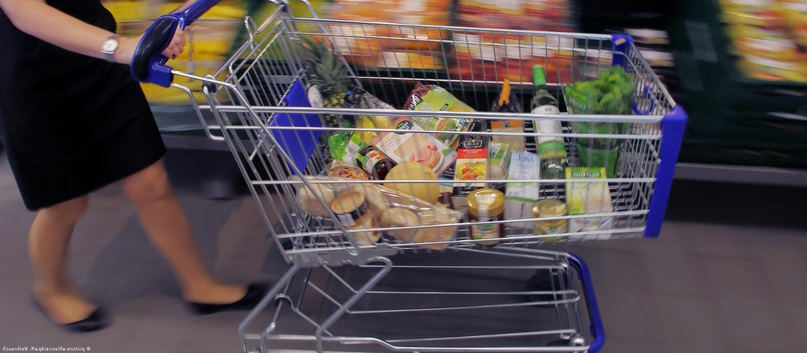European cuisine has long captivated the palates of food enthusiasts across the globe. From the hearty comfort foods of Italy and France to the delicate flavors of Spain and Greece, the diverse culinary traditions of Europe have become a beacon of gastronomic excellence. In recent years, the demand for European food products has skyrocketed, extending far beyond the borders of the continent. We will explore the unique appeal of European cuisine, the role of gastronomic tourism, the growth of international markets, and the challenges and opportunities in meeting this expanding demand. Join us on this culinary journey as we uncover the irresistible allure of European gastronomic delights.
Factors Driving the Demand for European Food Products
Quality and reputation of European food products
One of the primary drivers behind the soaring demand for European food products is their renowned quality and reputation. European countries, such as Italy, France, and Spain, have a long-standing tradition of culinary excellence and meticulous food production processes. From artisanal cheeses and cured meats to fine wines and indulgent chocolates, European food products are synonymous with superior taste and craftsmanship. Consumers around the world seek out these products for their exceptional quality, knowing that they are getting an authentic taste of Europe with every bite.
Authenticity and cultural heritage associated with European cuisine
 European cuisine is deeply rooted in cultural heritage and centuries-old traditions. Each region within Europe has its distinct culinary specialties, reflecting the unique cultural and historical influences of the area. Whether it’s the rich pasta dishes of Italy, the aromatic spices of the Mediterranean, or the hearty stews of Eastern Europe, European cuisine offers a diverse tapestry of flavors and culinary experiences. This authenticity resonates with consumers who crave an immersive gastronomic journey and a genuine connection to the food they consume. European food products provide a gateway to these traditional flavors, allowing individuals worldwide to savor the essence of European culture.
European cuisine is deeply rooted in cultural heritage and centuries-old traditions. Each region within Europe has its distinct culinary specialties, reflecting the unique cultural and historical influences of the area. Whether it’s the rich pasta dishes of Italy, the aromatic spices of the Mediterranean, or the hearty stews of Eastern Europe, European cuisine offers a diverse tapestry of flavors and culinary experiences. This authenticity resonates with consumers who crave an immersive gastronomic journey and a genuine connection to the food they consume. European food products provide a gateway to these traditional flavors, allowing individuals worldwide to savor the essence of European culture.
Growing interest in healthy, organic, and sustainable food choices
In recent years, there has been a significant shift in consumer preferences towards healthier, organic, and sustainable food options. European food products align well with these evolving trends, as many European countries have a strong focus on sustainable farming practices, organic certification standards, and environmentally friendly production methods. From farm-to-table philosophies to the use of locally sourced ingredients, European food products embody a commitment to quality and sustainability that resonates with health-conscious consumers. This growing interest in wellness and ethical consumption further fuels the demand for European food products, as they are perceived as a healthier and more sustainable choice.
Influence of social media and food-related content
In the digital age, social media platforms and food-related content have become powerful influencers in shaping consumer preferences and driving demand for specific food products. Platforms like Instagram and YouTube are flooded with visually captivating images and videos showcasing European dishes, culinary adventures, and food culture. Food bloggers, chefs, and influencers play a pivotal role in spreading awareness about European gastronomy and highlighting the appeal of European food products. As consumers come across these enticing visuals and engaging narratives, their curiosity and desire to try European food products are piqued, contributing to the increasing demand.
Gastronomic Tourism and European Food Products
Explanation of gastronomic tourism and its impact on food product demand
Gastronomic tourism, also known as culinary tourism or food tourism, has emerged as a prominent trend in travel and exploration. It involves seeking out unique and authentic food experiences as a primary motivation for travel. Gastronomic tourism goes beyond mere sightseeing; it encourages travelers to immerse themselves in the local food culture, taste traditional dishes, and discover the flavors that define a region. This form of travel has a profound impact on the demand for European food products. As tourists indulge in the gastronomic delights of their travel destinations, they develop a fondness for the regional cuisine and seek to recreate those experiences back home. This creates a ripple effect, driving the demand for European food products globally.
Role of food-focused travel experiences in promoting European cuisine
Food-focused travel experiences play a pivotal role in promoting European cuisine on a global scale. Travelers who embark on culinary journeys through Europe not only sample the diverse flavors and ingredients but also gain firsthand knowledge of the cultural heritage and culinary traditions that underpin European gastronomy. They partake in cooking classes, visit local markets, and dine at traditional eateries, all of which deepen their appreciation for European food. These experiences often inspire travelers to incorporate European recipes, cooking techniques, and ingredients into their own culinary practices. As they share their newfound love for European cuisine with friends and family, the demand for European food products rises, fostering a sense of culinary exploration and discovery.
Examples of popular European food destinations and their regional specialties
Europe boasts a plethora of renowned food destinations, each offering a distinct array of regional specialties. Italy, for instance, captivates food enthusiasts with its authentic pasta dishes, artisanal cheeses, and world-famous pizzas. France entices with its delicate pastries, fine wines, and intricate sauces. Spain tempts with its vibrant tapas culture, flavorful paella, and indulgent churros. Greece delights with its fresh Mediterranean ingredients, flavorful souvlaki, and creamy tzatziki. These destinations are just a glimpse of the rich culinary heritage that Europe has to offer. Travelers flock to these countries to savor the iconic dishes and experience the local food traditions firsthand. As a result, the demand for European food products from these regions expands, as people seek to recreate the authentic flavors and unique gastronomic experiences they encountered during their travels.

Global Markets for European Food Products
Overview of the international markets for European food products
European food products have found their way onto the plates of consumers worldwide, thanks to the flourishing international markets. The appeal of European gastronomy extends far beyond the continent, reaching North America, Asia, and various other regions. European countries have capitalized on this opportunity by exporting their culinary treasures to meet the demand of global consumers. From gourmet cheeses and chocolates to fine wines and specialty meats, European food products have become staples in kitchens and restaurants around the world.
Increasing demand for European delicacies in North America, Asia, and other regions
The demand for European delicacies continues to rise in various regions across the globe. In North America, there has been a surge in interest in European cheeses, cured meats, and artisanal bread. Consumers are seeking out the unique flavors and craftsmanship that European food products offer. Similarly, in Asia, European wines, chocolates, and gourmet ingredients have gained popularity as consumers develop a taste for the sophistication and diversity of European cuisine. These expanding markets present significant opportunities for European food producers to tap into new consumer bases and establish a strong presence globally.
Trade agreements and export strategies supporting the growth of European food exports
Trade agreements and export strategies have played a crucial role in supporting the growth of European food exports. The European Union (EU) has been proactive in negotiating trade agreements with various countries, creating favorable conditions for exporting European food products. These agreements help reduce tariffs, eliminate trade barriers, and simplify customs procedures, making it easier for European producers to access international markets. Additionally, European countries have implemented targeted export strategies, such as promotional campaigns and participation in international food exhibitions, to showcase their culinary excellence and entice foreign buyers. These efforts have contributed to the success and expansion of European food exports, establishing Europe as a powerhouse in the global food industry.
